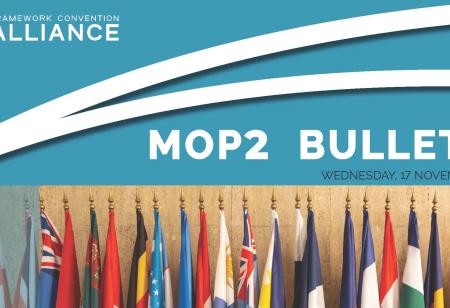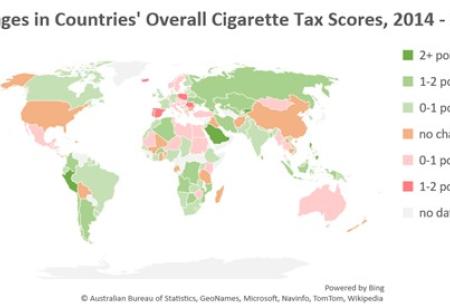

By Michal Stoklosa
There has been a slight decline in smoking prevalence in Zambia in recent years, but due to the country’s population growth the number of smokers is still increasing. The World Health Organization predicts that the number of Zambians who smoke will increase by an additional 300,000 people by 2025. This is a significant number for Zambia, a relatively small African nation of 17 million people. There are already about 8,000 tobacco-related deaths in Zambia each year, and this number will inevitably increase with the surge of new smokers. Moreover, this surge will be an enormous burden on Zambia’s small economy, with both increased healthcare costs and the lost productivity of those who are either sickened or die due to tobacco smoking.

The most effective way to increase cigarette prices and thus decrease cigarette consumption and prevalence is through tobacco excise tax increases. New research led by the American Cancer Society’s Economic and Health Policy Research team recently published a study in BMJ Tobacco Control examining tobacco price and tax dynamics in Zambia. Despite high, often double-digit, inflation and rapid income growth, tobacco taxes have rarely increased in Zambia. The 2016 budget increased the specific tax floor from 90 kwachas to 200 kwachas per 1000 sticks, but this represented a mere adjustment for inflation back to the tax levels at the time of their introduction in 2007. Consequently, Zambia has one of the lowest levels of tax as a proportion of price in the world. In 2016, tax comprised only 37% of the retail price of cigarettes of the most popular brand, compared to a global average of 56%. The World Health Organization recommends a tax share of at least 75%. Public support for further tax increases is large. An overwhelming majority of respondents in the 2014 International Tobacco Control Policy Evaluation Project (ITC) Zambia Survey (78%), including nearly three-quarters of smokers (74%), thought that the government should increase taxes on cigarettes.
Economic analysis of tobacco product demand in Zambia
The new study used data from the 2012 and 2014 waves of the ITC Survey to examine the probability of smoking in Zambia. The modeling allowed for precise analyses of the impact of price on cigarette use in the country. Switching between factory-made and roll-your-own cigarettes was also studied.
The study found that a 10% increase in the price of factory-made cigarettes led to up to a 4.7% relative reduction in the prevalence factory-made cigarette use. The effect of higher cigarette prices is, however, greatly reduced by the availability of much more affordable roll-your-own tobacco. After each cigarette tax increase that increased prices of factory-made cigarettes, instead of quitting or cutting back, some smokers switched to less expensive roll-your-own tobacco. Consequently, the effect of factory-made cigarette prices on smoking of all tobacco products is much lower: a 10% increase in the price of factory-made cigarettes leads to only a 2% relative decline in tobacco smoking.
A 10-fold cigarette tax increase is needed just to keep the number of smokers at the current levels
This study has important public health implications. Based on the Prevent20 modeling tool and the estimated price responsiveness of Zambian smokers, just to keep the number of smokers in Zambia from increasing, the price of factory-made cigarettes would need to be more than doubled by 2025. Because tax’s share of price is still very low in Zambia, such an increase in cigarette prices would require a 10-fold specific tax increase. Immediate, decisive government action is needed, partly because of Zambia’s rapid economic growth: with their incomes going up, Zambians can afford more goods and services, including tobacco products. New taxes will be effective only if the price increases outpace economic growth. In addition, such cigarette price increases would result in additional tobacco tax revenue of an estimated 400 million kwacha annually—which could be allocated to serving Zambians’ healthcare needs— and would help the country to achieve its World Health Organization goal of a 30% relative reduction in smoking by 2025.
Combining tax increases with actions to address the availability of cheaper roll-your-own tobacco will increase both health and fiscal effectiveness of the intervention. Since roll-your-own use is associated with lower socioeconomic status, efforts to decrease roll-your-own use, including through tax/price approaches and cessation assistance, would decrease health inequalities in Zambian society and reduce the negative economic consequences of tobacco use experienced by the poor.




